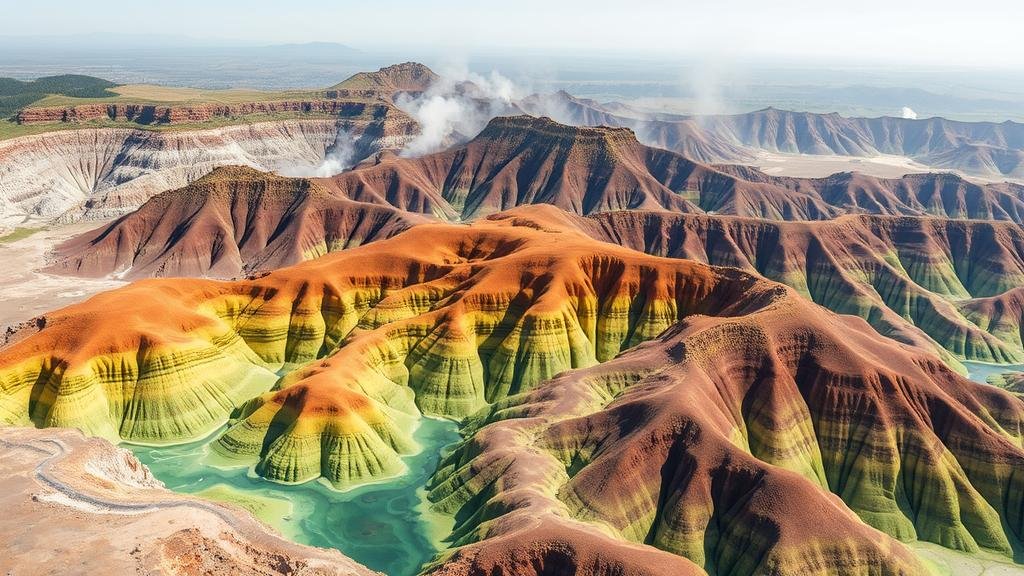The Role of Geothermal Alteration Zones in Predicting Ore Localization
The Role of Geothermal Alteration Zones in Predicting Ore Localization
Geothermal alteration zones play a pivotal role in mineral exploration and mining, functioning as crucial indicators of ore localization. Understanding these zones can enhance ore discovery rates and improve the efficiency of resource management. This article explores the formation of geothermal alteration zones, the processes involved, and their application in predicting the locations of economically viable mineral deposits.
Understanding Geothermal Alteration Zones
Geothermal alteration zones are areas where the geology has been affected by the heat and fluids associated with geothermal processes. e alterations can result from volcanic activity, tectonic movements, or the intrusion of hot magma into cooler rock formations. The minerals in the surrounding rock are chemically transformed, leading to significant changes in the zones mineralogy.
Common alteration types include:
- Propylitic alteration: Characterized by the presence of chlorite and calcite, indicative of low-temperature conditions.
- Argillic alteration: Involves the formation of clay minerals, signaling more intense hydrothermal activity.
- Silicification: The introduction of silica can enhance the localization of valuable minerals like gold and silver.
Processes Leading to Alteration
The processes that lead to geothermal alteration zones are multifaceted, involving geochemical and geophysical factors. When hot, mineral-rich fluids circulate through rock formations, they induce chemical reactions that can leach or deposit various elements. This results in specific alterations based on temperature, pressure, and the chemical composition of the fluids.
The key processes include:
- Hydrothermal Solutions: These are hot fluids rich in minerals that can dissolve and transport metallic ions, leading to mineralization.
- Fluid-rock Interaction: As hot fluids percolate through rocks, they change the mineral composition and, consequently, the physical properties of the rocks.
Application in Ore Localization
Geothermal alteration zones serve as valuable indicators for mineral explorationists. By analyzing these zones, geologists can infer the presence of nearby ore deposits. For example, the presence of silicified rock in an area may suggest significant gold mineralization, as seen in regions such as Nevadas Carlin Trend, where gold deposits are closely associated with such alteration zones.
Case studies illustrate the effectiveness of using alteration zones in predicting ore localization:
- Mount Margaret Mine, Australia: Studies of alteration patterns revealed extensive hydrothermal activity, leading to successful gold and copper discoveries.
- Yanacocha Gold Mine, Peru: The identification of argillic alteration provided insight into the hydrothermal system, significantly improving exploration success rates.
Statistical Evidence and Success Rates
Research indicates that the probability of locating ore deposits increases significantly when geothermal alteration zones are accurately mapped and analyzed. Studies show that approximately 70% of economically significant ore deposits are found within or near these zones. This high correlation underscores the importance of thorough geological surveys in exploration practices.
Potential Questions and Concerns
One common concern among geologists and investors is the reliability of geothermal alteration as a predictor for all ore types. While these zones have demonstrated a strong correlation with certain deposits, they are not universally applicable to every mineral resource. It is crucial to consider regional geological features and conduct comprehensive studies before concluding the economic potential of a site.
Actionable Takeaways
For exploration companies and geologists, the knowledge of geothermal alteration zones offers several actionable insights:
- Conduct detailed geological mapping of alteration zones to enhance exploration efforts.
- Incorporate geochemical analysis of rock samples to identify specific mineralization patterns.
- Use advanced technologies like remote sensing and GIS to assess larger areas for potential geothermal alteration signatures.
To wrap up, geothermal alteration zones are invaluable in the field of mineral exploration. By understanding the geological processes and utilizing advanced methodologies, exploration professionals can significantly improve their chances of finding lucrative ore deposits.



